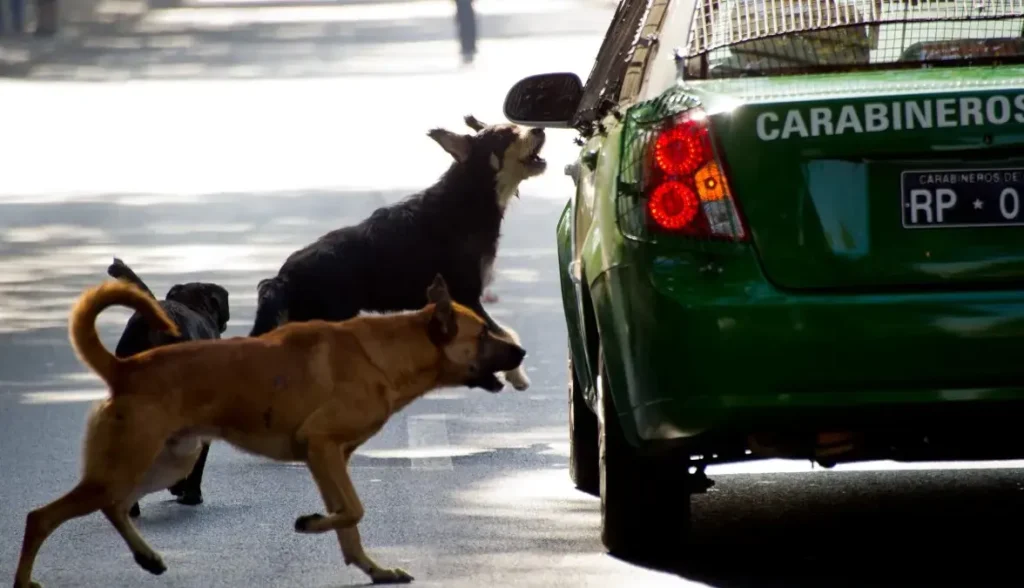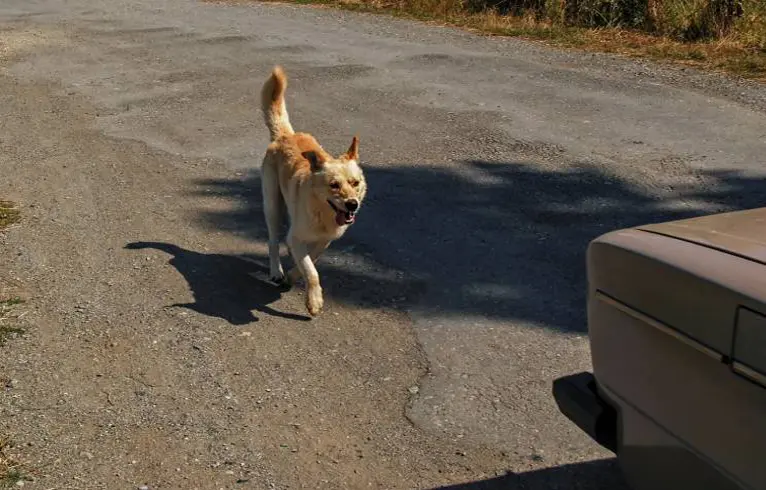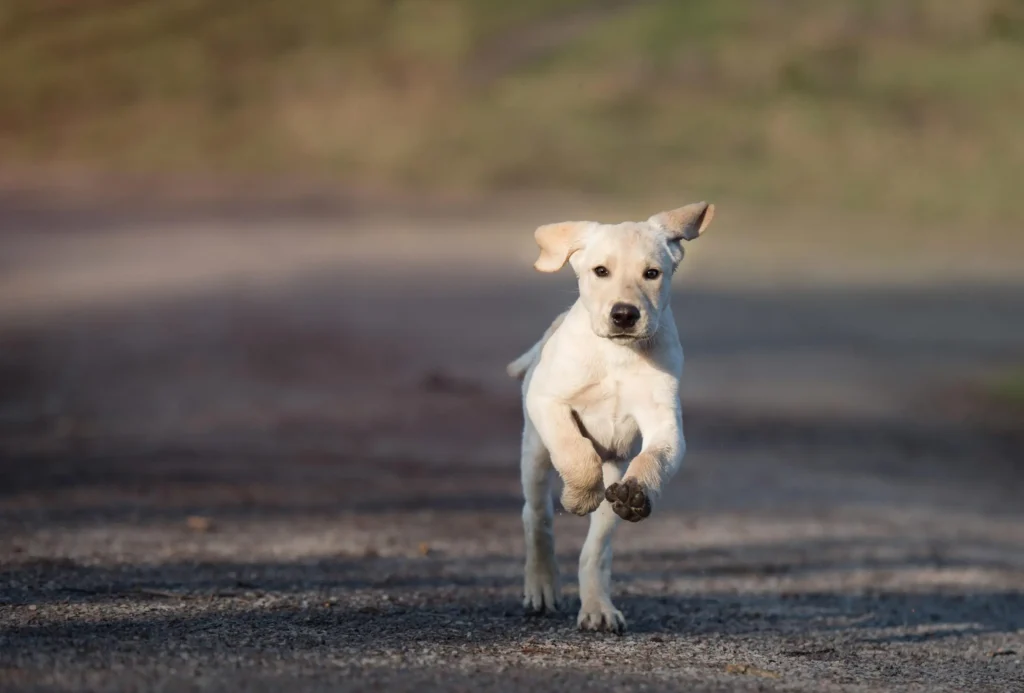Why Does My Dog Chase Cars and How Can I Stop It?

Introduction
A. Briefly introduce the common behavior of dogs chasing cars
Dogs chasing cars is a behavior where dogs run after moving vehicles. They might do this out of curiosity or because they see cars as something to chase like they would chase a toy or a small animal.
B. Highlight the risks and dangers associated with this behavior
Chasing cars can be very dangerous for dogs. They could get hit by a car and get hurt or even killed. It also worries drivers and can cause accidents. Dogs might not understand how fast cars are or that cars can harm them.

Why Dogs Chase Cars
A. Instinctual reasons rooted in predatory behavior
Dogs have an instinct to chase things that move quickly, like cars. This instinct comes from their ancestors who hunted prey by chasing it. When dogs see a car speeding by, their instinct tells them to give chase, even though cars are not prey.
B. Lack of proper exercise and mental stimulation
When dogs don’t get enough exercise or mental activities, they can become restless and bored. Chasing cars might be a way for them to burn off excess energy or alleviate boredom. Dogs need regular walks, playtime, and mental challenges to stay happy and calm.
C. Attention-seeking behavior or boredom
Sometimes, dogs chase cars to get attention from their owners or passersby. They might find that people react strongly when they chase cars, which can be exciting for them. Also, if dogs are left alone for long periods without company or activities, they might chase cars out of boredom or loneliness.

Risks and Consequences
A. Traffic accidents and injuries to the dog
When dogs chase cars, they risk getting hit by a vehicle, which can cause serious injuries or even death. Cars move fast and dogs might not realize the danger, leading to accidents that harm both the dog and the driver.
B. Legal implications for the owner
If a dog causes a traffic accident while chasing cars, the owner could face legal problems. They might be held responsible for damages or injuries caused by their dog. Owners need to prevent their dogs from chasing cars to avoid legal trouble.
C. Impact on community and neighborhood safety
Dog-chasing cars can disrupt neighborhood safety. Drivers may swerve to avoid hitting a dog, causing accidents. It also worries people walking or biking nearby. This behavior affects the whole community’s safety and peace.
How to Stop Your Dog from Chasing Cars
A. Ensure sufficient exercise and mental stimulation
Giving your dog plenty of exercise and activities helps reduce their desire to chase cars out of boredom or excess energy. Regular walks, playtime, and interactive toys can keep them engaged and less likely to chase passing vehicles.
B. Use positive reinforcement training techniques
Reward your dog with treats or praise when they ignore cars or follow your commands. Positive reinforcement teaches them that good behavior, like staying calm around cars, leads to rewards. This method helps change their behavior over time.
C. Consider professional training or behavioral therapy
Sometimes, professional help can be beneficial. Trainers or behaviorists can assess why your dog chases cars and create a customized plan to address the behavior. They use techniques and exercises designed to teach your dog safer habits.
Preventative Measures
A. Secure fencing and leash training
Ensure your yard has strong fencing to prevent your dog from running into the street after cars. Leash training teaches dogs to walk calmly beside you, reducing their urge to chase cars when on walks.
B. Redirecting attention with toys or treats
When you notice your dog showing interest in cars, distract them with toys or treats to redirect their attention. This helps them focus on something positive instead of chasing after vehicles.
C. Supervision and monitoring during outdoor activities
Always supervise your dog when they’re outside to quickly intervene if they start chasing cars. Stay alert during walks or playtime in areas with traffic to keep them safe and discourage chasing behavior.
Conclusion
A. Recap the importance of addressing car-chasing behavior
It’s crucial to stop your dog from chasing cars to keep them safe from accidents and injuries. Addressing this behavior helps protect not only your dog but also drivers and pedestrians.
B. Emphasize the role of responsible ownership in ensuring pet safety
As a pet owner, it’s your responsibility to provide proper training, supervision, and a safe environment. Responsible ownership reduces the risks associated with car-chasing behavior and enhances the overall well-being of your dog.



